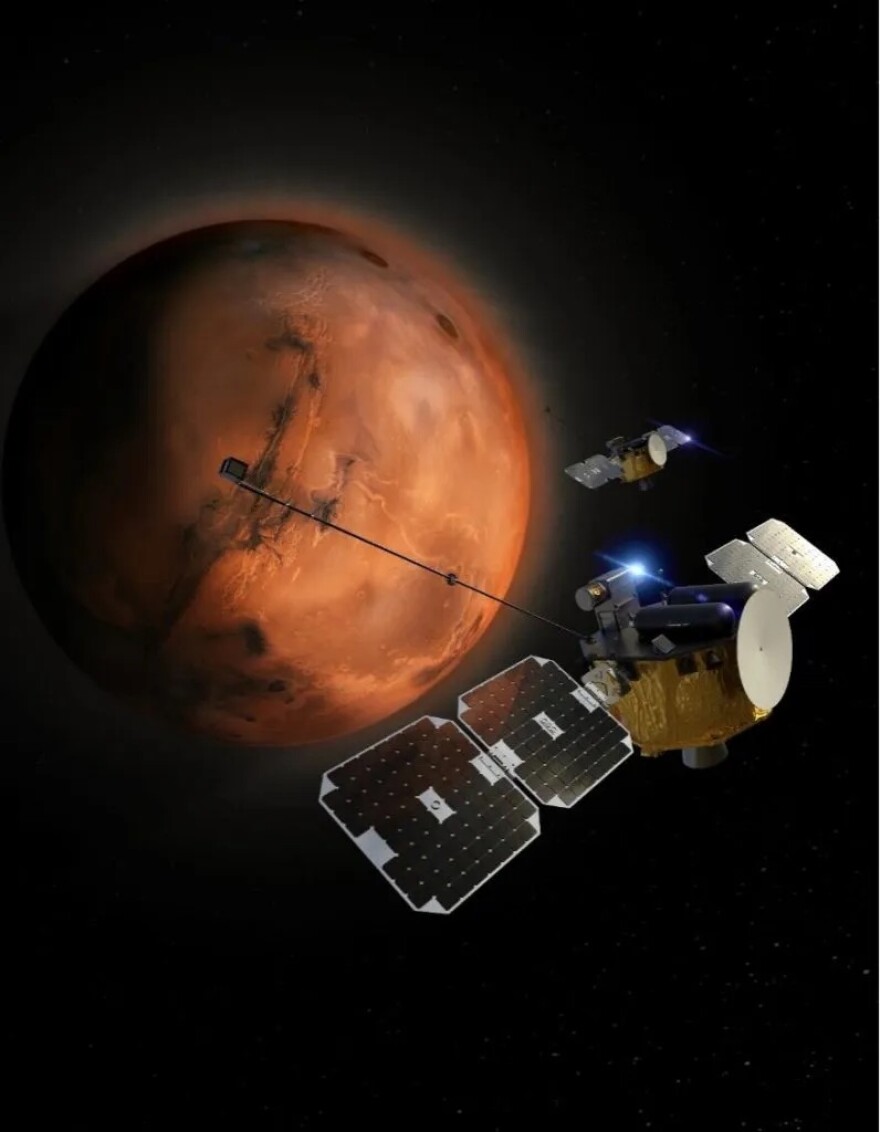Blue Origin will try once again Wednesday to launch a pair of NASA spacecraft to Mars on its New Glenn rocket from Cape Canaveral Space Force Station after an attempt Sunday was called off due to weather.
Cloud cover prevented Sunday afternoon’s attempt from Florida’s Space Coast. Launching a rocket through clouds could trigger lightning strikes, posing a risk to the rocket and the spacecraft on board.
Blue Origin will attempt to launch the mission dubbed NG-2 Wednesday, with a launch window opening at 2:50 p.m. EST. The company says it worked with the FAA to secure the launch window, which runs through 4:17 p.m. EST. On Monday, the FAA began limiting commercial space launches due to stresses on the air traffic control system brought on by the ongoing government shutdown.
Mission to Mars
The New Glenn rocket is carrying NASA’s Escape and Plasma Acceleration and Dynamics Explorers, or ESCAPADE. The mission will use two identical spacecraft to collect data on the planet’s magnetosphere and how solar wind may have led to the planet’s loss of most of its atmosphere – making the surface inhospitable.

The mission is part of NASA’s SIMPLEx program, which funds small and inexpensive planetary science missions. ESCAPADE’s cost is $75 million, with $55 million dedicated to the development of the spacecraft and $20 million for the launch.
The spacecraft, each about the size of a mini-fridge and weighing less than 250 pounds without fuel, were designed by commercial space company Rocket Labs.
Scientists hope the mission will help better understand how solar radiation affects the atmosphere and the planet – providing critical insight for future human missions to the surface.
Data from the mission can also help scientists on the search for life on Mars and in understanding if life ever exists on the planet, says University of Florida astrobiologist Amy Williams.
“All of this is really helpful for us to understand the billions of years of impact that solar winds have had on the planet and what that means for the potential for life to have survived, if it was ever present on Mars,” Willams told Central Florida Public Media’s Are We There Yet?.
If all goes as planned, the duo of spacecraft will arrive at Mars in 2027.
Critical test of New Glenn
The NG-2 mission will be just the second launch of Blue Origin’s New Glenn rocket.
More than a decade ago, Blue Origin founder Jeff Bezos announced plans to launch New Glenn from Cape Canaveral Space Force Station. Blue Origin has been launching paying passengers to the edge of space from West Texas since 2021 on its suborbital New Shepard rocket.

New Glenn, which is an orbital rocket, launched on its maiden flight in January and was largely considered a success. The vehicle is designed for reusability, with plans to land the first stage of the rocket on a ship out at sea.
During that first flight, Blue Origin failed to stick the landing. But on Wednesday, the company hopes for success. By landing the booster, the company can recycle it – lowering the cost of launching.
“I think that they're going to have to get more data before they successfully land one, but they're going to try, and I think that's exciting,” said Eric Berger, senior space editor at Ars Technica, speaking with Are We There Yet?. “I would put the odds at less than 50%, but fingers crossed that they succeed.”
Landing and reusing the boosters is critical to Blue Origin’s future plans for New Glenn. Ahead of Sunday’s launch attempt, New Glenn’s vice president of mission management Laura Maginnis said the team had made some changes to the landing system, hoping for a successful attempt.
“If we don’t land the booster, that’s OK,” she said “We have several more vehicles in production.”
New Glenn’s next mission is set to take the company’s Mark 1 lunar lander to the surface of the moon. Blue Origin has not yet set a launch date for the mission.


